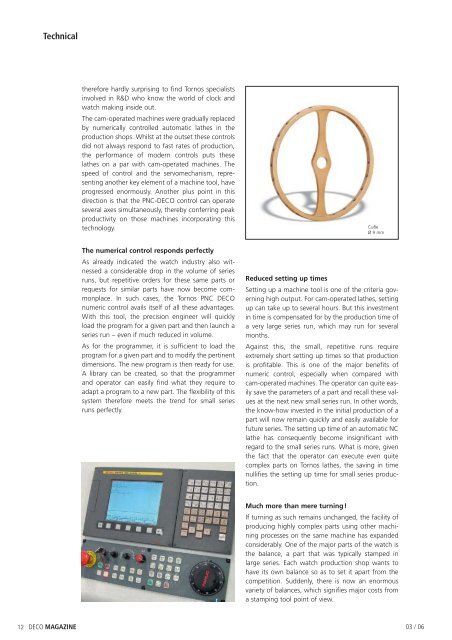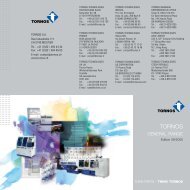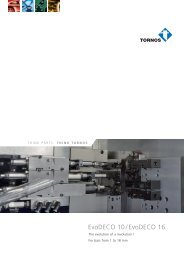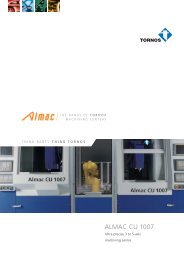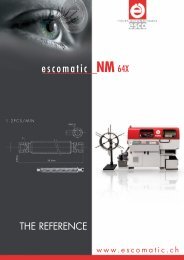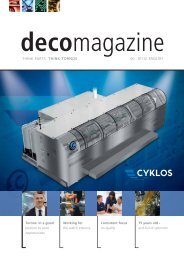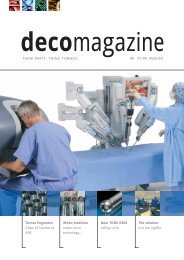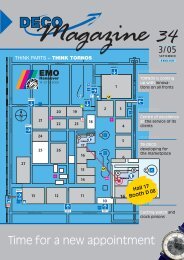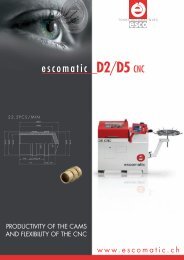You also want an ePaper? Increase the reach of your titles
YUMPU automatically turns print PDFs into web optimized ePapers that Google loves.
Technicaltherefore hardly surprising to find <strong>Tornos</strong> specialistsinvolved in R&D who know the world of clock andwatch making inside out.The cam-operated machines were gradually replacedby numerically controlled automatic lathes in theproduction shops. Whilst at the outset these controlsdid not always respond to fast rates of production,the performance of modern controls puts theselathes on a par with cam-operated machines. Thespeed of control and the servomechanism, representinganother key element of a machine tool, haveprogressed enormously. Another plus point in thisdirection is that the PNC-DECO control can operateseveral axes simultaneously, thereby conferring peakproductivity on those machines incorporating thistechnology.CuBeØ 9 mmThe numerical control responds perfectlyAs already indicated the watch industry also witnesseda considerable drop in the volume of seriesruns, but repetitive orders for these same parts orrequests for similar parts have now become commonplace.In such cases, the <strong>Tornos</strong> PNC DECOnumeric control avails itself of all these advantages.With this tool, the precision engineer will quicklyload the program for a given part and then launch aseries run – even if much reduced in volume.As for the programmer, it is sufficient to load theprogram for a given part and to modify the pertinentdimensions. The new program is then ready for use.A library can be created, so that the programmerand operator can easily find what they require toadapt a program to a new part. The flexibility of thissystem therefore meets the trend for small seriesruns perfectly.Reduced setting up timesSetting up a machine tool is one of the criteria governinghigh output. For cam-operated lathes, settingup can take up to several hours. But this investmentin time is compensated for by the production time ofa very large series run, which may run for severalmonths.Against this, the small, repetitive runs requireextremely short setting up times so that productionis profitable. This is one of the major benefits ofnumeric control, especially when compared withcam-operated machines. The operator can quite easilysave the parameters of a part and recall these valuesat the next new small series run. In other words,the know-how invested in the initial production of apart will now remain quickly and easily available forfuture series. The setting up time of an automatic NClathe has consequently become insignificant withregard to the small series runs. What is more, giventhe fact that the operator can execute even quitecomplex parts on <strong>Tornos</strong> lathes, the saving in timenullifies the setting up time for small series production.Much more than mere turning!If turning as such remains unchanged, the facility ofproducing highly complex parts using other machiningprocesses on the same machine has expandedconsiderably. One of the major parts of the watch isthe balance, a part that was typically stamped inlarge series. Each watch production shop wants tohave its own balance so as to set it apart from thecompetition. Suddenly, there is now an enormousvariety of balances, which signifies major costs froma stamping tool point of view.12 DECO MAGAZINE 03 / 06


